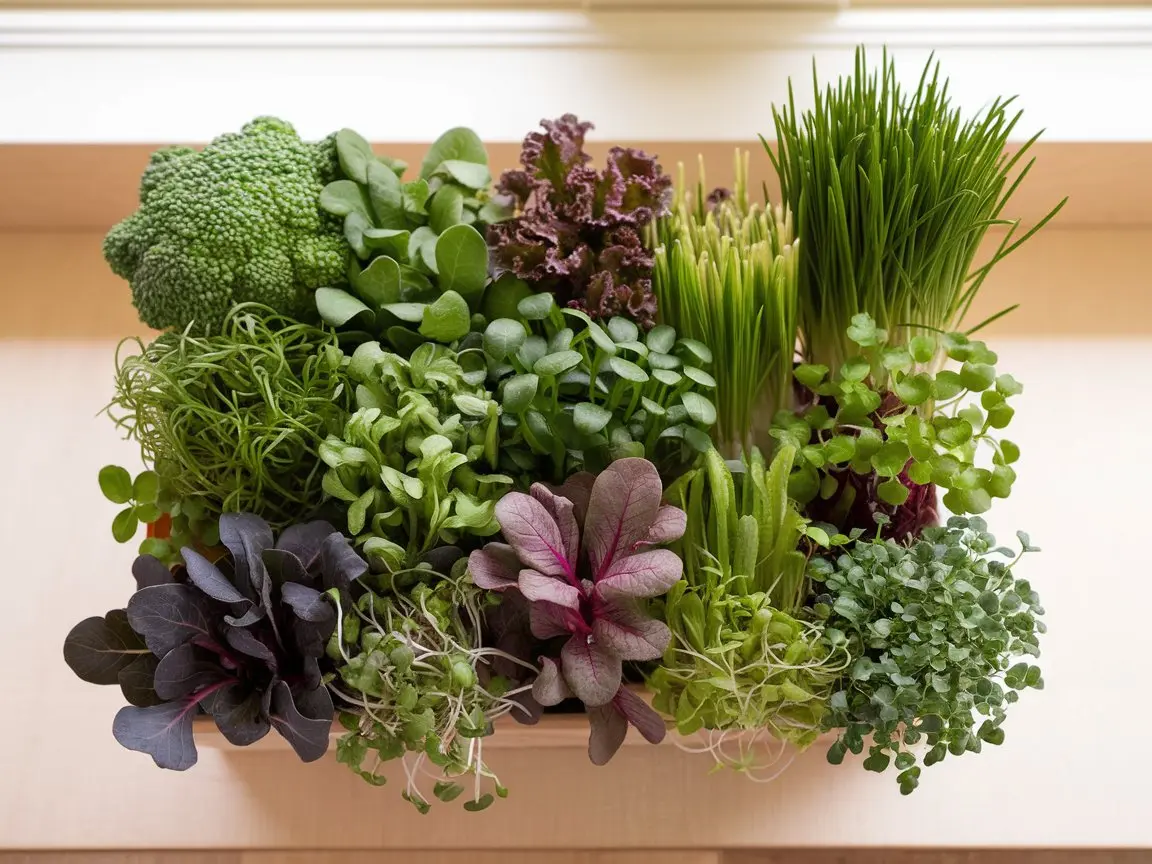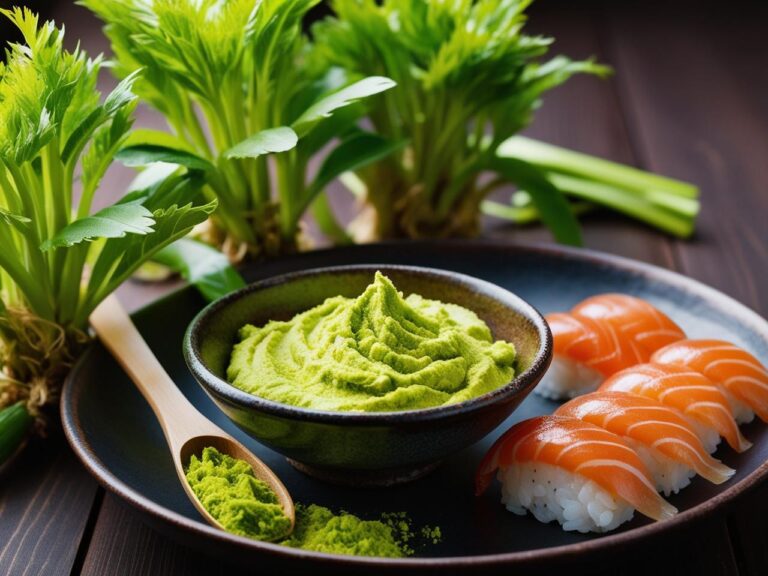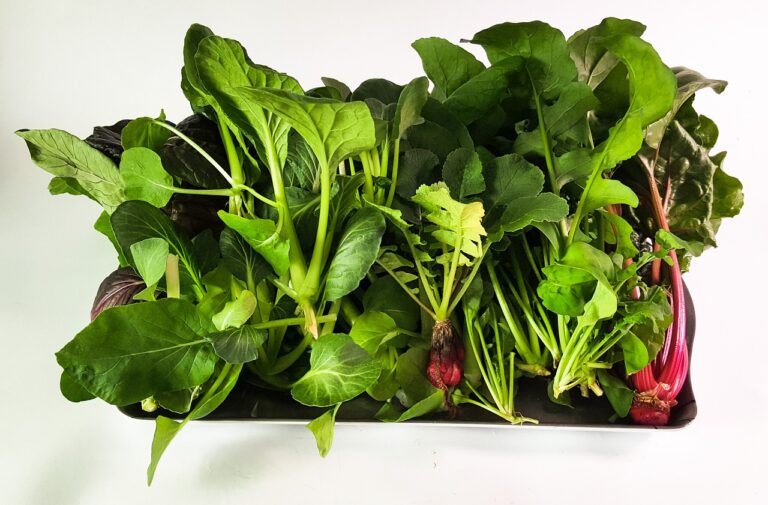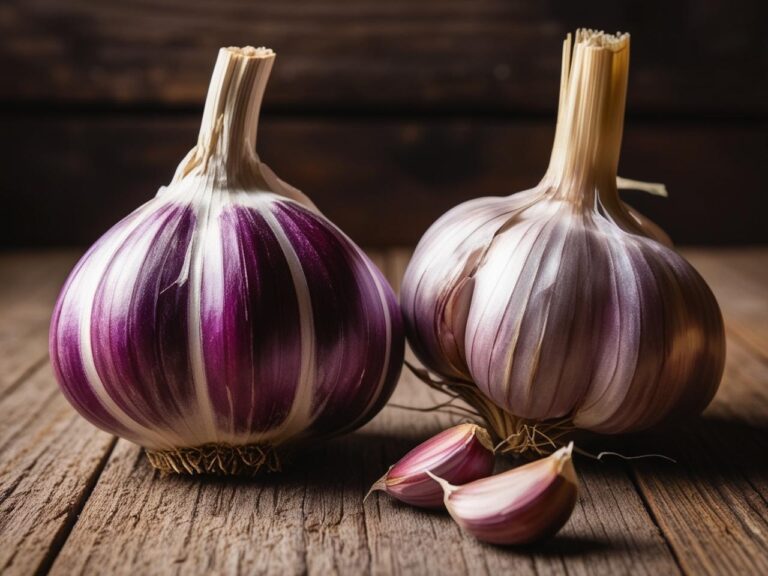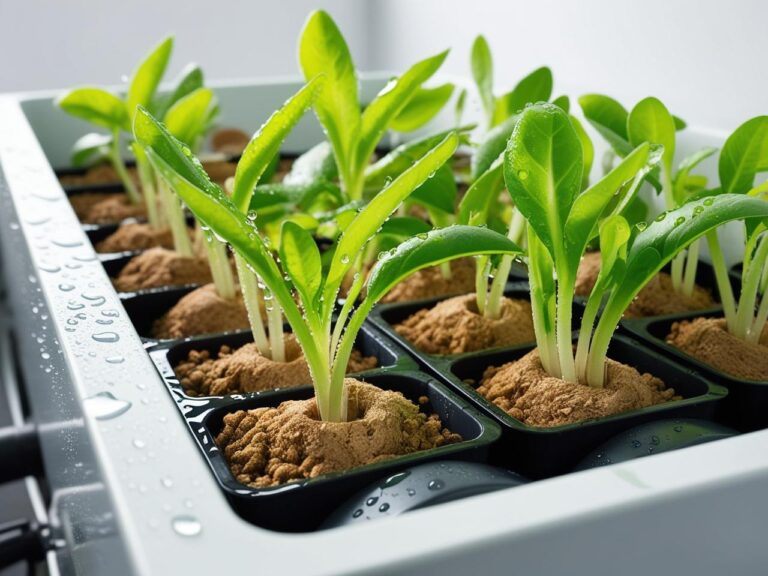25 Microgreens with Incredible Health Benefits
Why Grow Microgreens?
Microgreens are nutrient-dense, typically containing 4–40 times the nutrients of their mature counterparts. They grow quickly (7–21 days) and require minimal space, making them perfect for home gardens or commercial hydroponic systems. They’re also versatile and can be added to salads, smoothies, sandwiches, and soups.
These microgreens thrive in soil, hydroponic mats, or coco coir and need adequate light (12–16 hours daily) for optimal growth.
Related: How to Grow Microgreens Without Soil
Cruciferous Vegetables (Brassicas)
- Broccoli Microgreens
- Health Benefits: Extremely high in sulforaphane, which supports detoxification, reduces inflammation, and may prevent cancer.
- Kale Microgreens
- Health Benefits: Packed with vitamins A, C, and K; supports immune health and bone strength.
- Arugula Microgreens
- Health Benefits: Rich in antioxidants and glucosinolates; supports heart and liver health.
- Cabbage Microgreens (Red & Green)
- Health Benefits: Contains anthocyanins and vitamin C; reduces inflammation and supports skin health.
- Radish Microgreens
- Health Benefits: High in vitamin E, C, and antioxidants; supports digestion and reduces inflammation.
- Mustard Microgreens
- Health Benefits: Spicy flavor with high levels of glucosinolates; boosts metabolism and detoxifies.
- Cauliflower Microgreens
- Health Benefits: Similar to broccoli; supports digestion and may help prevent chronic diseases.
- Turnip Microgreens
- Health Benefits: High in vitamin A, calcium, and iron; supports eye health, bone strength, and energy levels.
Leafy Greens
- Spinach Microgreens
- Health Benefits: Rich in iron, folate, and antioxidants; supports energy production and heart health.
- Lettuce Microgreens
- Health Benefits: Hydrating and high in vitamins A and K; promotes skin and bone health.
- Swiss Chard Microgreens
- Health Benefits: High in magnesium and potassium; supports muscle and nerve function.
Herbs
- Basil Microgreens
- Health Benefits: Contains antioxidants and anti-inflammatory compounds; supports digestion and immunity.
- Cilantro Microgreens
- Health Benefits: High in vitamin C and detoxifying properties; supports liver health.
- Dill Microgreens
- Health Benefits: Contains vitamin A and flavonoids; supports digestion and reduces bloating.
- Parsley Microgreens
- Health Benefits: Rich in chlorophyll, vitamins A and C; promotes detoxification and immune health.
Legumes
- Pea Shoots
- Health Benefits: High in protein, vitamin C, and iron; promotes muscle growth and energy.
- Lentil Microgreens
- Health Benefits: Rich in folate, magnesium, and protein; supports heart health and energy levels.
- Chickpea Microgreens
- Health Benefits: High in fiber and antioxidants; supports digestion and reduces cholesterol.
Grains and Pseudograins
- Wheatgrass
- Health Benefits: High in chlorophyll; supports detoxification, boosts energy, and improves digestion.
- Quinoa Microgreens
- Health Benefits: Contains all essential amino acids; high in protein and fiber.
- Amaranth Microgreens
- Health Benefits: Rich in iron, magnesium, and calcium; supports blood health and bone strength.
Other Popular Microgreens
- Sunflower Microgreens
- Health Benefits: High in protein, healthy fats, and vitamin E; promotes skin health and energy.
- Beet Microgreens
- Health Benefits: Rich in nitrates and betalains; supports heart health and blood flow.
- Fenugreek Microgreens
- Health Benefits: Aids digestion and blood sugar regulation; high in vitamins A and C.
- Onion Microgreens
- Health Benefits: Contains allicin and antioxidants; supports heart and immune health.
Frequently Asked Questions (FAQs)
- What are the easiest microgreens to grow?
- Broccoli, radish, and pea shoots are beginner-friendly options due to their rapid growth and minimal requirements.
- Can microgreens replace regular vegetables?
- While they are highly nutritious, microgreens are a supplement to, not a replacement for, a balanced diet that includes whole vegetables.
- How much microgreens should I eat daily?
- A small handful (20–30 grams) can provide a substantial nutrient boost.
- Are microgreens safe for everyone?
- Yes, but it’s essential to ensure they’re grown in hygienic conditions to prevent contamination.
- What are the best growing conditions for microgreens?
- Indirect sunlight, moderate humidity, and well-drained soil are ideal for growing healthy microgreens.
- Can I grow microgreens without soil?
- Absolutely! Hydroponic methods using a growing mat or water work effectively.

